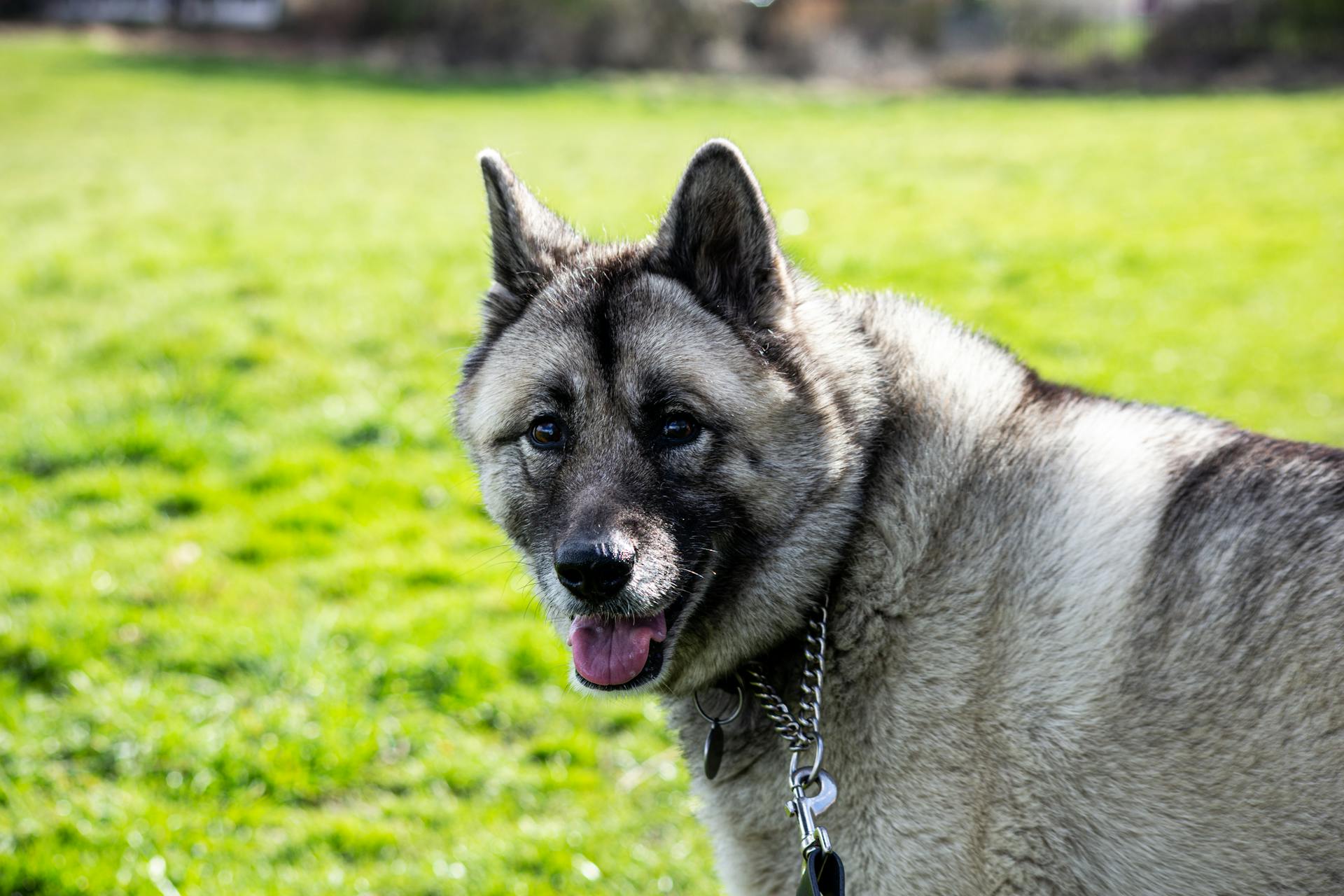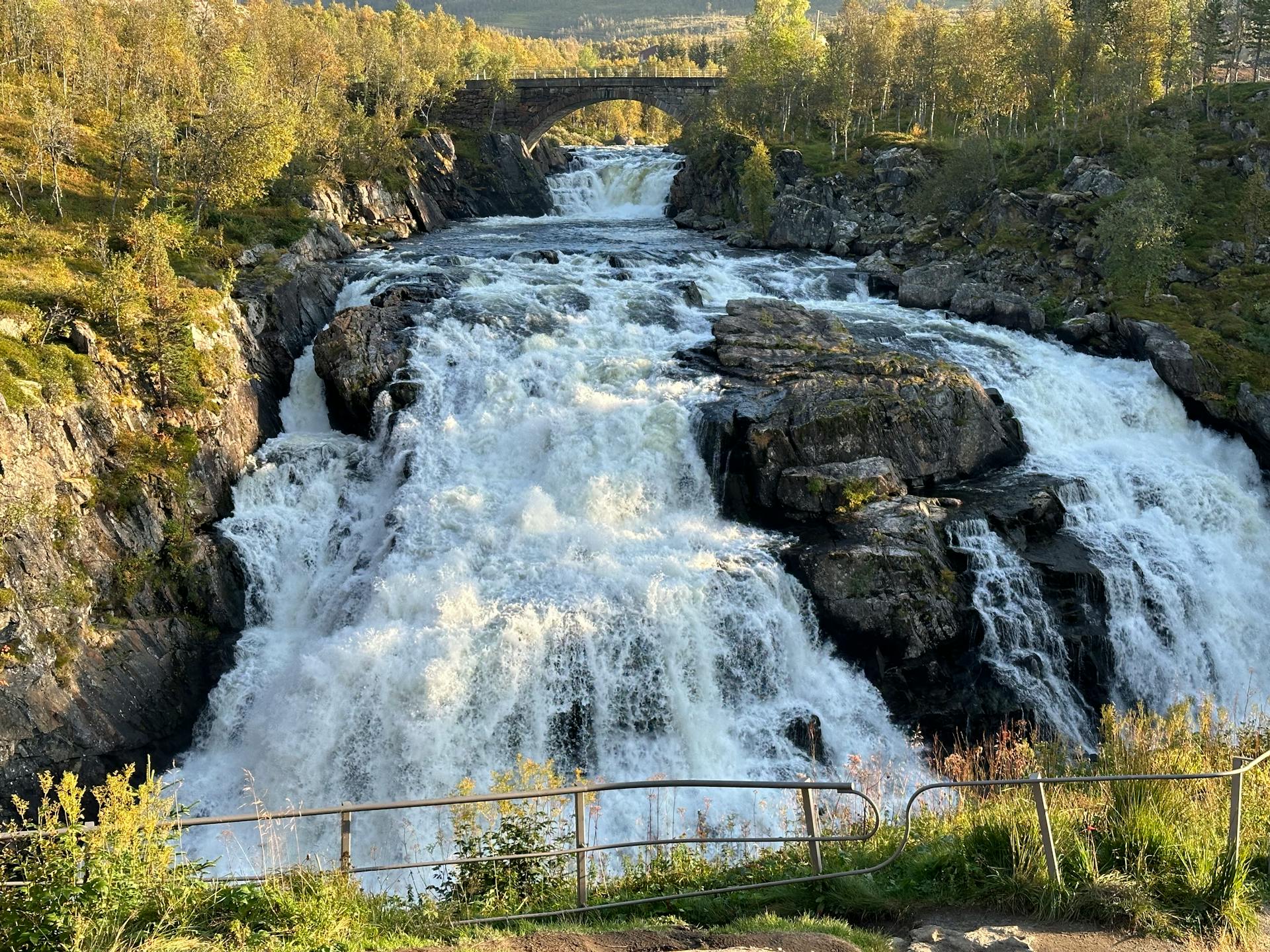
As a Norwegian Elkhound owner, you're probably eager to know how to support your furry friend's growth and development. Norwegian Elkhounds typically weigh between 35-50 pounds and stand between 19-22 inches tall at the shoulder, with males being slightly larger than females.
Puppies will grow rapidly during the first few months, with some owners reporting weight gains of up to 1-2 pounds per week. This rapid growth is a normal part of their development, but it's essential to monitor their weight and adjust their diet accordingly.
Norwegian Elkhounds are considered a medium-sized breed, and their growth plates typically close between 12-18 months of age. This means that their bones will be fully formed by the time they reach adulthood, allowing them to reach their full height and weight potential.
Growth and Care
Daily exercise is a must for Norwegian Elkhounds, with breeders recommending 30 minutes twice a day to keep them healthy and lean.
They're exceptionally food-motivated, so it's essential to keep an eye on their food intake to prevent obesity. Those soulful brown eyes can be quite persuasive when it comes to sneaking snacks.
A home with a fenced yard is ideal, as they love to run around and play outside. However, they're adaptable to apartment living, as long as you're prepared for their barking.
Crate training is a great way to ensure your Elkhound doesn't have accidents in the house or get into things they shouldn't. It's also a cozy spot for them to take a nap.
Their rugged coat requires daily brushing to prevent shedding woes, especially during the spring and fall when they blow their coats. A few minutes a day will keep them looking their best.
You might like: Should I Wet My Dogs Dry Food
Grooming
Grooming is a crucial part of caring for your Norwegian Elkhound.
Their thick, fluffy double coat sheds moderately throughout the year, but very heavily during spring and fall shedding seasons. They need a sturdy double-sided brush with pins on one side for detangling matted fur and a soft side for light de-shedding and redistributing skin oils through the fur.
Consider reading: Double Coated Golden Retriever
Daily brushing for a few minutes is essential to keep their shedding under control. You may need to brush them more frequently in the spring and fall when they blow their coats.
Baths should be given every 6 weeks or as needed, using a gentle, high-quality dog shampoo when they get visibly dirty. They don't need to be bathed frequently, but an occasional bath is beneficial every six months or so when they shed their undercoat.
Trim their nails as needed, usually monthly, to prevent overgrowth. If their nails get long, you'll hear the distinctive clickety-clack warning on hard surfaces.
Daily teeth brushing is also crucial, starting when your Elkhound is a puppy. This will make the task much easier and prevent dental health issues. An annual professional cleaning by your vet is vital for their dental health.
Explore further: When Do Service Dogs Retire
Elkhound Care
The Norwegian Elkhound requires daily exercise to burn off energy and maintain a healthy weight, with breeders recommending 30 minutes twice a day.
A home with a fenced yard is more suitable for an Elkhound, as they can be barker-prone and need space to run around.
Proper feeding and exercise are essential throughout an Elkhound's life, especially since they can become obese due to their food motivation.
Crate training benefits every dog, including Elkhounds, and should start at a young age to help them accept confinement if needed.
Elkhounds are people dogs and shouldn't spend their lives locked up in a crate or kennel, so it's essential to use crate training wisely.
Food & Diet
Norwegian Elkhounds are highly motivated by food and can turn into accomplished beggars, so it's essential to establish a feeding routine.
They love food and aren't likely to miss a meal, which can lead to overeating if not monitored. Expect them to let you know it's mealtime, but resist the urge to overfeed them or give them too many treats.
Treats should make up no more than 10% of their daily diet, and it's crucial to check with your vet for diet recommendations based on your pet's needs.
Here's an interesting read: Food to Clean Dogs Teeth
Puppies need a diet with 28% to 32% protein content, which will then decrease to 20% to 24% once they reach maturity.
High-quality commercial dog food is a good starting point, but the quality of dog food you buy also makes a difference – the better the dog food, the further it will go toward nourishing your dog.
A highly active dog will need more food than a couch potato dog, and it's essential to measure your Elkhound's food and feed them twice a day rather than always leaving food out.
You can check if your Elkhound is overweight by giving them the eye test and the hands-on test: look down at them and see if you can spot a waist, and then place your hands on their back to feel their ribs without pressing hard.
Here's an interesting read: How Often Should I Change My Dogs Food
Size and Exercise
The Norwegian Elkhound is a medium-sized dog, averaging 20.5 inches in height. Males average 55 pounds; females 48 pounds.
Exercise is essential for this breed, with at least an hour of vigorous exercise per day required. They love light running, fetch, and watersports for low-impact activities.
As a very smart breed, they need mental stimulation to keep them sharp and tire out their intrepid brain. Regular training sessions, puzzle feeders, and mental games like hide and seek or obstacle courses are great ways to do this.
Size
The Norwegian Elkhound is a medium-sized dog, averaging 20.5 inches in height. Males can grow to be quite sturdy, averaging 55 pounds, while females tend to be a bit smaller, weighing around 48 pounds.
Exercise
Norwegian Elkhounds need at least an hour of vigorous exercise per day. They're highly active dogs that thrive on physical activity.
Light running, fetch, and ordinary yard antics are great low-impact activities for Elkhounds. You can also try watersports for a fun and engaging way to exercise your dog.

As puppies from 6 to 12 months, it's essential to limit their exercise to avoid skeletal and joint deformities like dysplasia. This means opting for lower-impact activities during this critical growth period.
Mental stimulation is just as important as physical exercise for Elkhounds. Regular training sessions can help encourage critical thinking and patience, but you'll need to mix it up with other activities to keep them engaged.
Puzzle feeders are a great way to manage your Elkhound's penchant for overeating. You can also use stuffed Kongs and snuffle mats to keep them occupied and stimulated indoors.
Related reading: Activities for Dogs with High Prey Drive
Quick Facts
The Norwegian Elkhound is a remarkable breed with a rich history. They originated in Norway and have been around for over 5,000 years!
Here are some quick facts about this ancient breed:
- The Norwegian Elkhound is the National Dog of Norway.
- Their lifespan is relatively long, ranging from 12-15 years.
- They come in two sizes: males are 20-22 inches tall at the shoulder, while females are 18-20 inches tall.
- Males weigh between 45-60 pounds, while females weigh between 35-45 pounds.
- They have a thick, double coat that's gray or black in color.
- Their exercise needs are high, so be prepared to give them plenty of physical activity!
- They require early and consistent training to become well-behaved companions.
Featured Images: pexels.com

